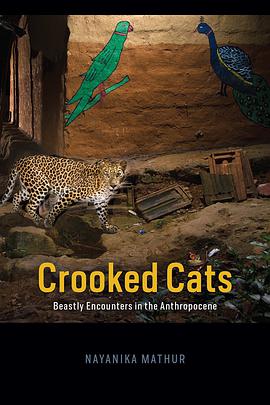Crooked Cats
豆瓣
Beastly Encounters in the Anthropocene
Nayanika Mathur
简介
How do humans live near big cats—tigers, leopards, and lions—that may or may not be predatory? Though they are popularly known as “man eaters,” this new book by anthropologist Nayanika Mathur reframes them as cats that have gone off the straight path to become “crooked.” Her firsthand account of living with crooked cats in India lays bare the peculiar atmosphere of terror these encounters create, reinforced by rumors, anger, humor, myths, conspiracy theories, and the making of “celebrity” cats.
There are various theories of why and how a big cat turns to eating people, and Mathur lays out the dominant ideas offered on the basis of fifteen years of research in India. These vary from the effects of climate change and habitat loss to history and politics. There is no firm explanation for why specific big cats turn on humans, even from the scientists who study animal behavior. Detailing the beastly tales emerging from the uncertainty created by the presence and actions of crooked cats, this book offers startling new insights into both the governance of nonhumans and their deep entanglements with humans.
Beautifully detailed in its portrayal of India’s places, people, and animals, Crooked Cats sheds light on how we understand nonhuman animals, the hidden impacts of the climate crisis, and changing human-nonhuman relations in the Anthropocene.
contents
Prologue: Of Two Reigns of Terror
Introduction: The Beastly Tale of the Leopard of Gopeshwar
1. Crooked Becomings
2. Murderous Looks
3. The Cute Killer
4. A Petition to Kill
5. The Leopard of Rudraprayag versus Shere Khan
6. Big Cats in the City
7. Entrapment
8. Three Beastly Tales to Conclude
Acknowledgments
Glossary
Notes
Bibliography
Index